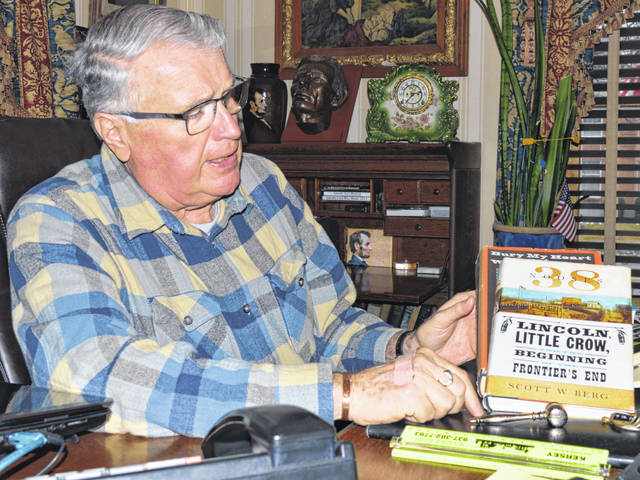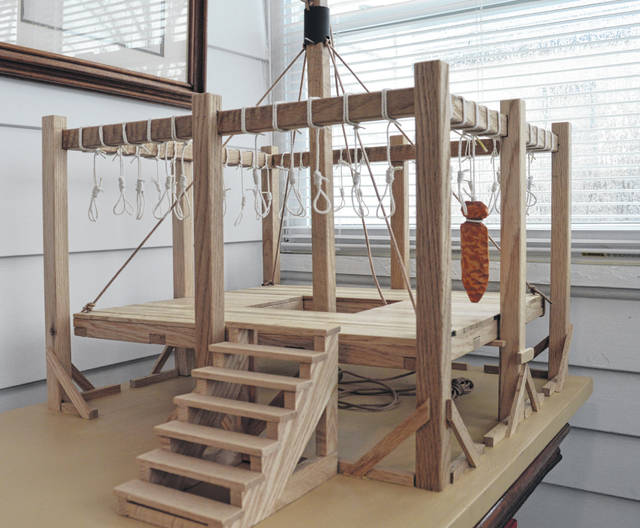

WILMINGTON — Lincoln expert Gary Kersey gave a speech once to retired teachers of Greene County about the largest mass execution in U.S. history which occurred in Minnesota in 1862 while Lincoln was president.
What he could tell from the educated audience is they didn’t know much about this event in American history when 38 Sioux Indians were hung with Lincoln’s permission.
And though Kersey says the occurrence is pretty hard to take, it is part of the Lincoln presidency and Kersey commissioned a local woodworker to build a to-scale miniature model of the gallows to include with his thousands of other items related to Lincoln.
Previously, Kersey had the same woodworker, Charlie Lakatos, build a replica of the Lincoln house in Springfield, Illinois.
What is the basic story of the executions? According to the Minnesota History Center, “Minnesota was still a young state, part of a frontier inhabited by more than one million Indians. Times were hard and Indian families hungry. When the U.S. government broke its promises, some of the Dakota Indians went to war against the white settlers.”
Many people on both sides were killed or fled Minnesota, the same history website states. On Dec. 26, 1862, the day after Christmas, 38 Dakota Indians were hanged in Mankato in the largest mass execution in U.S. history.
The mass execution, then, is linked to a frontier war.
There was enough information available about the way the gallows were built that making a model of it was doable, Kersey said.
The 1862 gallows was designed to hang 40, he said. Kersey spoke with people he respects and trusts to see what they thought and felt about depicting the Sioux in the gallows model. Nobody thought there should be carved Indians with the gallows, though it would have been feasible because historians know how they were dressed at the execution.
“Nobody wanted to put a figure in the noose,” Kersey said.
So instead local wood carver Don Mertz hand carved 40 arrowheads which, as the News Journal photograph of the model gallows demonstrates, have a contour that roughly resembles a human outline.
“We didn’t feel it was demeaning — to use arrowheads rather than carved bodies,” said Kersey.
Kersey owns a 2012 book by Scott W. Berg with the title “38 Nooses: Lincoln, Little Crow, and the Beginning of the Frontier’s End”. In addition, the New York Times had a special correspondent at the public hanging who filed a report.
Kersey said Lincoln had the courage to only execute 38 out of an original 303 who were convicted. Despite pressure to do so, Lincoln said he cannot hang men for votes, added the local Lincoln scholar.
The condemned men sang death songs as they walked to their public executions, and once they were on the scaffold, they continued to sing and sway, said Kersey.
“I find it interesting they wanted them all hung at the same time. And so, three drum taps, on the third one the guy cut the rope and the platform all fell at one time,” he said.
The model’s raised wooden platform actually falls too by pulling out a pin. Kersey said even the replica’s steps that climb up to the scaffold are correct.
“It’s so sad,” he remarked.
Reach Gary Huffenberger at 937-556-5768.



